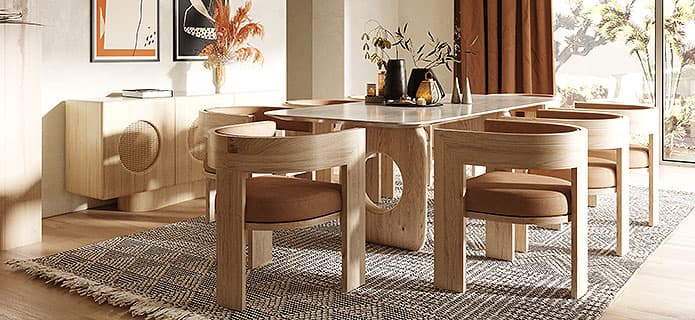**Eco-Friendly Furniture: Sustainable Choices for a Greener Home**
As environmental awareness continues to grow, more homeowners are seeking eco-friendly options for furnishing their homes. Sustainable furniture not only reduces the environmental impact of manufacturing and disposal but also promotes healthier indoor air quality and supports responsible resource management. Here’s a guide to making eco-friendly furniture choices for a greener home:
**1. Sustainable Materials:**
– Choose furniture made from sustainable materials such as reclaimed wood, bamboo, cork, or recycled metals. These materials are harvested or produced in environmentally responsible ways, minimizing deforestation, habitat destruction, and carbon emissions.
**2. Certified Wood:**
– Look for furniture that is certified by organizations such as the Forest Stewardship Council (FSC) or the Sustainable Forestry Initiative (SFI). These certifications ensure that the wood used in the furniture comes from responsibly managed forests that prioritize conservation and biodiversity.
**3. Recycled and Upcycled Furniture:**
– Consider furniture made from recycled or upcycled materials, such as reclaimed lumber, salvaged metal, or repurposed textiles. By giving new life to discarded materials, these pieces reduce waste and minimize the need for virgin resources.
**4. Low-VOC Finishes:**
– Choose furniture with low-VOC (volatile organic compound) finishes or natural finishes such as beeswax or plant-based oils. These finishes emit fewer harmful chemicals into the air, contributing to better indoor air quality and reducing health risks for occupants.
**5. Minimal Packaging:**
– Opt for furniture brands that use minimal packaging or eco-friendly packaging materials such as recycled cardboard or biodegradable packaging peanuts. Minimal packaging reduces waste and helps minimize the environmental impact of shipping and delivery.
**6. Durable and Long-lasting Design:**
– Invest in well-made, durable furniture designed to last for years to come. High-quality furniture not only reduces the need for frequent replacements but also minimizes waste and resource consumption over time.
**7. Modular and Versatile Pieces:**
– Choose modular or versatile furniture pieces that can adapt to changing needs and spaces. Modular furniture allows you to customize configurations and add or remove components as needed, reducing the need for additional purchases and minimizing waste.
**8. Support Local Artisans and Craftspeople:**
– Consider purchasing handmade furniture from local artisans and craftspeople who prioritize sustainable practices and use locally sourced materials. Supporting local artisans helps reduce the environmental impact of transportation and promotes the preservation of traditional craftsmanship.
**9. Energy-Efficient Manufacturing:**
– Look for furniture brands that prioritize energy-efficient manufacturing processes and use renewable energy sources such as solar or wind power. Energy-efficient manufacturing reduces carbon emissions and conserves resources, contributing to a more sustainable furniture industry.
**10. Consider Secondhand or Vintage Furniture:**
– Explore secondhand or vintage furniture options through thrift stores, consignment shops, or online marketplaces. Buying secondhand furniture extends its lifespan, reduces waste, and prevents additional resources from being used to produce new items.
By making eco-friendly furniture choices, you can create a greener home that reflects your commitment to sustainability and environmental stewardship. Whether you’re furnishing a single room or redesigning your entire living space, incorporating sustainable furniture options contributes to a healthier planet and a more mindful way of living.



